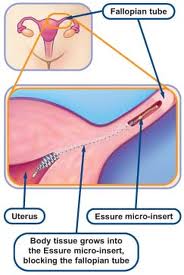If you’re like most people, you got your first bits of information about pregnancy and birth control not from doctors, but from your friends or other people your own age. You probably picked up some useful information in this way – but there’s a lot of bad information floating around out there too. And these rumors don’t die easily – some of them have been around for generations! So here’s the real deal on some of the most common rumors, exaggerations and full-blown lies when it comes to contraception.*
Myth #1: A girl can’t get pregnant if she doesn’t have an orgasm.
Pregnancy occurs when a man’s sperm fertilizes a woman’s egg. This can happen whether or not she has an orgasm.
Myth #2: A guy can’t get a girl pregnant if he doesn’t have an orgasm.
It’s unlikely that a man will get a woman pregnant if he doesn’t have an orgasm – or if he pulls out before he reaches orgasm – but it’s certainly not impossible. Men often release a small amount of semen before they ejaculate. This semen still contains sperm and can certainly get a woman pregnant.
Myth #3: A girl can’t get pregnant when she has sex for the first time.
A woman who is ovulating can get pregnant on her very first time having sex, regardless of her age or her sexual history.
Myth #4: A girl can’t get pregnant if she douches after sex.
Douching does very little to prevent conception. After sexual intercourse, the sperm immediately enter the cervix where they are out of reach of any douching solution.
Myth #5: Pregnancy can’t occur if people do it standing up or with the woman on top.
Positions make very little difference when it comes to getting pregnant. When a man deposits sperm into a woman’s vagina, natural processes guide the sperm toward the woman’s cervix and uterus – and whether she’s on top, lying down or standing on her head really won’t make much difference.
Myth #6: Pregnancy can’t occur if a couple has sex only on the girl’s “safe” days.
Since each woman’s menstrual cycle is different, it’s almost impossible to predict which days are “safe”. Sperm can survive for several days in a woman’s body, so a couple could have sex well before the woman ovulates and still run the risk of pregnancy.
Myth #7: The birth-control pill is effective as soon as you start taking it.
Depending on the day you start taking the pills, it might take up to one complete menstrual cycle before you can count on the Pill to prevent pregnancy. You should definitely rely on another method of birth control during this transition.
Myth #8: The Pill can only be taken for a limited time.
In most healthy women, the Pill can be taken safely from puberty to menopause, and its effectiveness won’t go down as they get older.
Myth #9: The Pill makes you fat.
Studies have found that today’s low-dose oral contraceptives won’t cause significant weight changes in most women.
Myth #10: The Pill causes cancer.
On the whole, the Pill actually lowers cancer risk. It actually cuts the risk of both ovarian and uterine cancers by more than 50 per cent, a benefit that persists even after you stop taking it.
Myth #11: Contraceptive intrauterine devices (IUDs) causes infertility.
If a woman has a sexually transmitted infection (STI), the IUD can help to spread it into a woman’s uterus and fallopian tubes, which could damage her future fertility. But this is only a problem if a woman already has an STI. As long as a woman doesn’t get an STI, the IUD doesn’t put her fertility at risk. For couples who don’t have STIs and are in a long-term, monogamous relationship (a.k.a. they don’t have sex with anyone but each other), the IUD is a very safe and the most effective reversible form of contraception.
Myth #12: Contraceptives protect against sexually transmitted infections (STIs).
The only contraceptive that offers such protection is the condom. Even other barrier methods, such as the diaphragm, do nothing to keep bacteria out of the vagina, and the Pill and IUD offer no STI protection at all.
Finally, remember that every method of birth control is safer than the risks of complications during pregnancy (e.g. blood clots)—after all this is the “disease” we are trying to prevent. Keeping it real.
Wishing you good health!
Scott Kramer MD, FACOG, FACS

PS: Hysteroscopic Sterilization (Essure) permanent tubal “plugs” takes about 5 minutes to perform under local anesthesia, and is usually covered by health insurers. It avoids the risks and recovery of a tubal ligation, and is more effective; even surpassing vasectomy
*Source: The Society of Obstetricians and Gynaecologists of Canada (SOGC)















Speak Your Mind